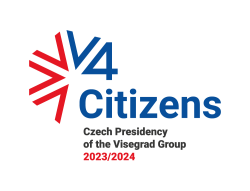
Wed 24 April 2024
Warszawa (PL)
6/6°C
| Mon | Tue | Wed | Thu | Fri |
|---|---|---|---|---|
| 6 | 11 | 8 | 11 | 14 |
Wed 24 April 2024
Praha (CZ)
5/3°C
| Mon | Tue | Wed | Thu | Fri |
|---|---|---|---|---|
| 8 | 11 | 10 | 12 | 15 |
Wed 24 April 2024
Bratislava (SK)
6/6°C
| Mon | Tue | Wed | Thu | Fri |
|---|---|---|---|---|
| 11 | 11 | 10 | 12 | 14 |
Wed 24 April 2024
Budapest (HU)
10/9°C
| Mon | Tue | Wed | Thu | Fri |
|---|---|---|---|---|
| 13 | 16 | 11 | 13 | 17 |
Joint Paper of the Visegrad Group, Bulgaria, Croatia, Romania and Slovenia on Cohesion Policy after 2020
adopted on 2 March 2017 in Warsaw by the Ministers responsible for Cohesion Policy,
in parallel to the adoption of the COTER position on the future of Cohesion Policy,
followed by a joint session of V4+4 and COTER,
as a sign of enhanced cooperation with the Committee of Regions.
Cohesion Policy Unique Features
- Recalling our Joint Statement of January 2016 signed under the Czech Presidency of the Visegrad Group, We agree that Cohesion Policy is the fundamental EU investment policy supporting growth and creating jobs, and thus should remain one of the key pillars of the EU budget after 2020. Its objectives are directly related to the fundamentals of the European integration as defined in the Treaty of Rome, namely the reduction of disparities among regions and the constant improvement of the living and working conditions of European citizens. The objectives of Cohesion Policy are still valid as they strengthen economic, social and territorial cohesion of the Union.
- We strongly emphasize that Cohesion Policy removes barriers to investment and makes the financial resources reach the real economy. European Structural and Investment Funds (ESI Funds) serve as a tool for EU integration by supporting the 4 freedoms, implementing structural reforms and European standards of good governance and contributing to the EU strategy for growth and jobs.
- By increasing employment and job opportunities, enhancing human capital and reinforcing social inclusion, Cohesion Policy addresses the EU social goals. The European Social Fund, as an integral part of Cohesion Policy, should remain the key EU tool for investing in people also in the future.
- Cohesion Policy combines the European long-term development vision with bottom-up approach thanks to the shared management model, multilevel governance and partnership mechanisms. Territorial orientation of the policy allows Member States and regions to design tailor-made solutions while fulfilling national, regional and European goals, addressing emerging challenges as well as specific needs of individual territories, including cities.
- As indicated above, European Added Value of Cohesion Policy can be seen in its all dimensions: economic, social and territorial. It is also in such elements as: (a) an exchange of know-how and stimulation of cooperation across the EU, including through European Territorial Cooperation and the macroregional strategies, (b) increasing efficiency and effectiveness of public spending, i.e., through result-orientation, or (c) building administrative capacity helping to focus on the strategic management in terms of better programming, implementation and evaluation.
- Cohesion Policy strengthens the European project as it directly serves EU citizens and mobilizes them to communicate, cooperate and take up joint initiatives. Enhancing convergence between Member States and regions consolidates Europe giving better perspectives for its citizens.
Cohesion Policy results
- Cohesion Policy is the most extensively evaluated policy of the EU contributing to growth, employment and social inclusion in various regions, including those in non-cohesion countries. It is proved for example by Commission ex-post evaluations for years 2007–2013 or the evaluation study on benefits for the EU-15 deriving from the implementation of Cohesion Policy in the V4 countries (available at www.ewaluacja.gov.pl). The V4 study inter alia shows that in the years 2007–2015 economic benefits for the EU-15 resulting from Cohesion Policy in V4 amounted to €97bn (equivalent to 80% of the EU-15 contribution for the implementation of Cohesion Policy in those 4 countries). This evidence-based approach should be a corner stone of streamlining the implementation procedures for the future while ensuring the right balance between stability of rules and their simplicity.
- We believe that adequate and effective communication of the results and socio-economic impact of Cohesion Policy in the Member States and their regions is necessary. It is in this spirit We have prepared a brochure on best practice projects in countries illustrating well the European Value Added of Cohesion Policy.
Cohesion Policy beyond 2020
- The long-term development support of Cohesion Policy should remain stable and predictable as structural transformation of regions, cities and other communities cannot be achieved in a short-term perspective.
- We believe that Cohesion Policy should remain the policy for all EU regions with special attention to the less developed ones. Proper consideration should be also given to the regions which may, due to spill-over and networking effects, have significant influence on the development of the entire country. In this context there is an urgent need to clarify the long-term strategic framework and direction in which the EU is to develop, especially as regards its growth and jobs agenda.
- In order to achieve cohesion in development levels across EU regions and countries it is crucial to ensure transparent and coherent systems of programming and implementation sensibly linked to the European Semester process not only for Cohesion Policy but also for other EU policies. Individual policies are not isolated silos—they should be considered as a smartly-designed, forward-looking and balanced policy mix. Thus all efforts should be made to avoid negative competition between Cohesion Policy and other EU instruments, in particular through exchange of good practices between all types of EU funds (both under the central and shared management model) and by providing similar implementation conditions for the same types of projects.
- We believe that the future Cohesion Policy should be based on a few important elements, including: result-orientation, flexibility, proportionality, integrated approach and simplicity.
- To reinforce the result-orientation of the Cohesion Policy, We emphasize a need for:
a) the shared management model ensuring a better ownership and responsibility for the policy implementation among all stakeholders involved. There is a need to precise the roles and responsibilities of all stakeholders and establish a clear division of their competences, with special emphasis on restoring trust between the Commission, other EU institutions and Member States. In this respect, it is crucial to find the right balance between the result orientation of the policy and the level of checks and controls as well as simplification of procedures. This should also include the audit process, which should be based on trust, be preventive, predictable and proportional as well as respect the outcomes of the national control and audit authorities;
b) fewer but well targeted, defined and communicated ex-ante conditionalities based on the key investment barriers most relevant for the growth and jobs agenda and with a clear system of assessing their fulfilment. We call for more consistency between ex-ante conditionalities and other measures linking the ESI Funds, including the relevant Country Specific Recommendations and avoiding a duplication with existing EU compliance regimes;
c) thematic concentration—ensuring the right balance between thematic support and specific needs of Member States, regions and cities;
d) stronger focus on using of off-the-shelf simplified cost options which should be available from the beginning of implementation.
- We emphasize there is a strong need to create more flexibility for national, regional and local authorities to address their specific objectives within the operational programmes, including the use of the integrated territorial approach.
- We support proportionality that would maintain high standards of investments supported by Cohesion Policy in each Member State and region, while limiting administrative costs and allowing for a visible reduction in administrative burden. The proportionality should not be limited only to the volume of allocation, but other elements such as reliability of institutions, efficiency of management and control systems or the error-rate level could be explored. It is very important, however, to ensure that proportionality does not lead to further complexity of programming or implementation.
- With a view to supporting the European integration and the harmonious development of the Union's territory at various levels, We count on strengthening the Interreg programmes. They should be implemented in shared management, based on simplified rules and should be more result-oriented. Small scale projects should still play a vital role in the cooperation across borders but funding should be also directed towards those strategic investments, which will have a potential to give a stronger impetus to improving territorial cohesion of border areas. Closer alignment of implementation mechanisms of cross-border ENI and IPA programmes to Interreg is desirable.
- Moreover, We recognize the significance of financial instruments across all relevant policy areas and their enhanced complementarity with grants. The selection of a form and sources of financing should be appropriate for the goals, which are to be delivered. Making use of financial instruments should be much simpler and aligned with market practices. Effectiveness of financial instruments should be measured in terms of achieving public policy objectives, not just their financial multiplier.
- Drawing lessons from the delayed launch of the 2014–2020 implementation, We consider it very important to start the programming process for post 2020 period as soon as possible. The informal dialogue between the Commission and Member States about the basic conditions for the new programming period should start prior the Commission submits legislative proposals. Following the previous experience and work of the High Level Group reflecting on future of Cohesion Policy.
We call on the Commission to establish, by mid-2017 the latest, an informal platform with representatives of all Member States with a view of providing a basis for an early start of the post 2020 programming process.







